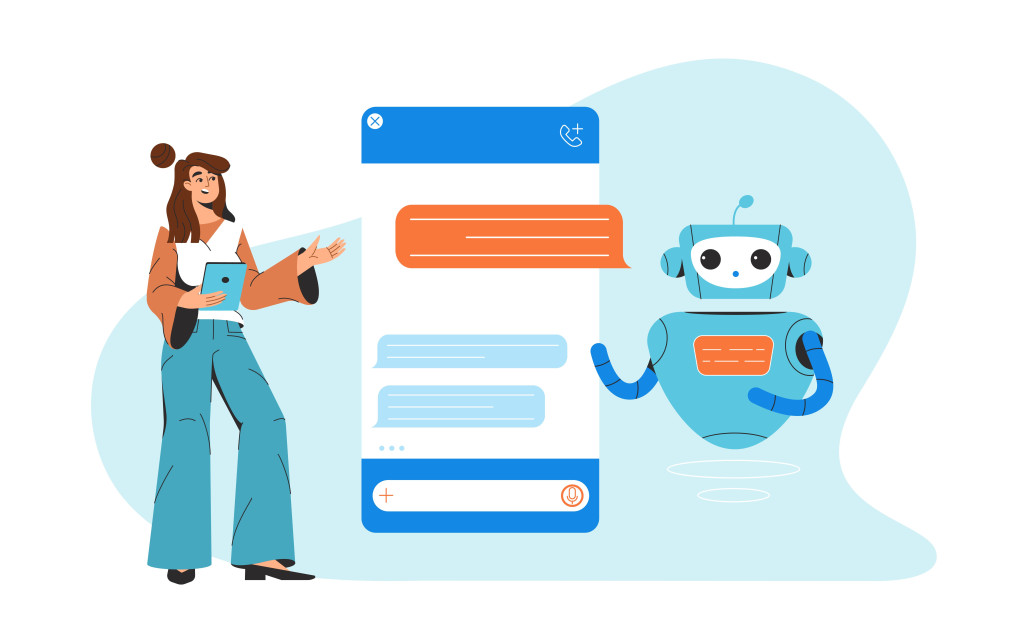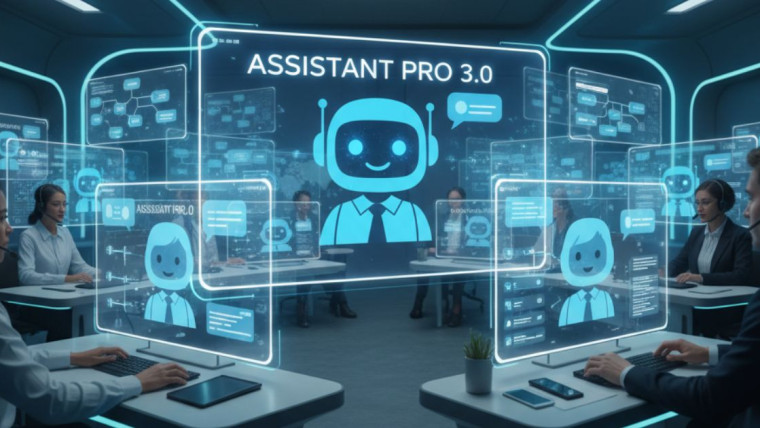The rise of e-commerce chatbots has fundamentally changed how online businesses interact with customers and drive sales. These AI-powered tools are no longer just basic customer service assistants—they’ve evolved into sophisticated sales engines that actively boost conversion rates across digital storefronts.
Modern e-commerce businesses are discovering that chatbots do more than answer simple questions. They guide shoppers through complex purchase decisions, recover abandoned carts, and provide personalized product recommendations that rival human sales associates. The numbers speak for themselves: companies implementing chatbot technology report conversion rate improvements of 10-67%, depending on their industry and implementation strategy.
This transformation represents a significant shift in conversational commerce, where artificial intelligence meets human psychology to create seamless shopping experiences. As consumer expectations continue to evolve, understanding how these digital assistants impact your bottom line becomes crucial for competitive success.
The Science Behind Chatbot Conversion Success

Immediate Response Times Drive Purchase Decisions
Speed matters enormously in online retail. When potential customers have questions about products, shipping, or return policies, delays often lead to abandoned shopping sessions. Traditional customer service channels—email tickets, phone queues, or contact forms—create friction that modern shoppers simply won’t tolerate.
AI chatbots eliminate this friction entirely. They provide instant responses 24/7, addressing customer concerns the moment they arise. This immediate engagement keeps visitors actively browsing instead of leaving to research competitors. Studies show that 67% of consumers expect brands to provide real-time customer service, making chatbots essential for meeting these demands.
The psychological impact extends beyond mere convenience. Quick responses signal reliability and professionalism, building trust that translates directly into higher conversion rates. When customers feel heard and supported, they’re significantly more likely to complete their purchases.
Personalized Shopping Experiences at Scale
Advanced ecommerce chatbots analyze user behavior, browsing history, and preferences to deliver highly targeted product suggestions. Unlike static recommendation engines, conversational AI adapts its approach based on real-time interactions, creating dynamic shopping experiences that feel genuinely personalized.
These virtual assistants learn from every conversation. They identify customer pain points, understand budget constraints, and recognize shopping patterns that humans might miss. This intelligence enables them to present relevant options at precisely the right moments, increasing both average order values and conversion likelihood.
The chatbot platform technology behind this personalization continues advancing rapidly. Machine learning algorithms now process natural language with remarkable accuracy, allowing customers to describe their needs conversationally rather than navigating complex category structures.
Strategic Implementation Areas for Maximum Impact
Abandoned Cart Recovery Campaigns
Cart abandonment affects roughly 70% of online shopping sessions, representing a massive revenue loss for e-commerce businesses. Traditional email recovery campaigns achieve modest 10-15% success rates, but abandoned cart chatbot strategies consistently outperform these results.
Proactive chatbot engagement catches customers before they leave entirely. When the AI detects hesitation signals—extended time on checkout pages, multiple product comparisons, or cursor movements toward the exit button—it can initiate helpful conversations that address specific concerns.
These interactions might offer additional product information, highlight current promotions, or provide reassurance about security and return policies. The conversational approach feels less pushy than email campaigns while delivering information exactly when customers need it most.
Pre-Purchase Consultation Services
Complex products often require detailed explanations before customers feel confident buying. Electronics, fashion items, home goods, and health products frequently involve multiple variables that influence purchasing decisions. Human sales staff excel at these consultations, but they’re expensive and have limited availability.
AI-powered chatbots bridge this gap effectively. They can walk customers through product specifications, compare different options, and explain compatibility requirements with patience and accuracy. Unlike human representatives, they never get tired, rushed, or inconsistent in their recommendations.
The chatbot shopping assistant approach works particularly well for businesses selling technical products or items with extensive customization options. Customers appreciate having their questions answered thoroughly without feeling pressure from commissioned salespeople.
Post-Purchase Engagement and Upselling
Customer relationships shouldn’t end at checkout. Smart ecommerce chatbots continue providing value after purchases are complete, fostering loyalty that drives repeat business and referrals.
These AI systems can proactively share order updates, delivery tracking information, and usage tips for purchased products. They might suggest complementary items based on previous purchases or notify customers about relevant sales and new arrivals.
This ongoing engagement creates positive associations with your brand while identifying natural upselling opportunities. Customers who feel supported throughout their entire journey are more likely to become long-term advocates and repeat buyers.
Measuring Chatbot Impact on Conversion Performance

Key Metrics That Matter
Successful chatbot implementation requires careful tracking of relevant performance indicators. Conversion rate improvements are the ultimate goal, but several supporting metrics provide insights into how AI assistants influence customer behavior.
Engagement rates measure how many visitors interact with chatbots and for how long. Higher engagement typically correlates with increased conversions, as customers who spend time asking questions are more invested in potential purchases.
Resolution rates indicate how effectively chatbots address customer concerns without requiring human intervention. Higher resolution rates suggest that the AI is providing satisfactory answers, reducing friction in the buying process.
Average order values often increase when chatbots successfully recommend additional or upgraded products. Tracking this metric helps quantify the upselling effectiveness of your conversational AI strategy.
A/B Testing Chatbot Strategies
Different chatbot approaches work better for different audiences and product types. Systematic testing helps identify the most effective strategies for your specific business context.
Test variables might include greeting messages, response timing, product recommendation algorithms, or escalation procedures. Small changes in chatbot behavior can produce significant differences in conversion outcomes.
Consider testing proactive versus reactive engagement styles. Some customers prefer chatbots that initiate conversations, while others respond better to assistants that wait for questions. Finding the right balance requires experimentation and data analysis.
Overcoming Common Implementation Challenges
Balancing Automation with Human Touch
While AI chatbots excel at handling routine inquiries and guiding standard purchase flows, complex situations still benefit from human expertise. The key lies in creating seamless handoff procedures that escalate conversations appropriately.
Effective chatbot platforms recognize when conversations exceed their capabilities and transfer customers to human representatives smoothly. This prevents frustration while ensuring that complex needs receive proper attention.
Training your human customer service team to work alongside AI assistants creates a hybrid approach that maximizes both efficiency and customer satisfaction. Representatives can focus on high-value interactions while chatbots handle routine tasks.
Maintaining Brand Voice Consistency
Your chatbot represents your brand in every customer interaction. Inconsistent messaging or inappropriate tone can damage customer relationships and reduce conversion effectiveness.
Develop clear guidelines for chatbot communication that align with your overall brand personality. Whether your voice is professional, friendly, quirky, or authoritative, the AI should reflect these characteristics consistently.
Regular review and refinement of chatbot responses help maintain quality standards as your business evolves. Customer feedback often reveals opportunities to improve messaging and better serve user needs.
Future Trends in Conversational Commerce
Integration with Voice and Visual Search
Emerging chatbot technologies are expanding beyond text-based interactions. Voice-enabled shopping assistants and visual search capabilities are creating new opportunities for customer engagement and conversion optimization.
These advances will enable more natural, intuitive shopping experiences that feel less like interacting with software and more like consulting with knowledgeable assistants.
Enhanced Predictive Capabilities
Next-generation AI in online retail will anticipate customer needs before they’re explicitly expressed. By analyzing browsing patterns, seasonal trends, and individual preferences, chatbots will proactively suggest products and services that customers are likely to want.
This predictive approach promises to further increase conversion rates while improving customer satisfaction through seemingly prescient recommendations.
Implementing Your Chatbot Strategy for Success
The transformation of e-commerce through intelligent chatbot technology is no longer a future possibility—it’s happening now. Businesses that embrace conversational AI gain significant advantages in customer engagement, conversion optimization, and competitive positioning.
Success requires thoughtful implementation that prioritizes user experience over technological novelty. Start with clear objectives, measure results consistently, and refine your approach based on real customer feedback. The most effective chatbot strategies evolve continuously, adapting to changing customer preferences and market conditions.
Ready to explore how chatbots can transform your conversion rates? Begin by identifying your biggest customer service challenges and conversion bottlenecks. These pain points often represent the best opportunities for AI-powered improvements that deliver measurable business results.








Chatbots for Customer Retention: How AI Improves Loyalty and Reduces Churn
Transforming Employee Onboarding with AI Chatbots: A Step-by-Step Guide
Emergency Response Chatbots: Revolutionizing Crisis Management with AI
Revolutionizing Recruitment: How Chatbots Streamline Hiring Processes and Elevate Talent Acquisition